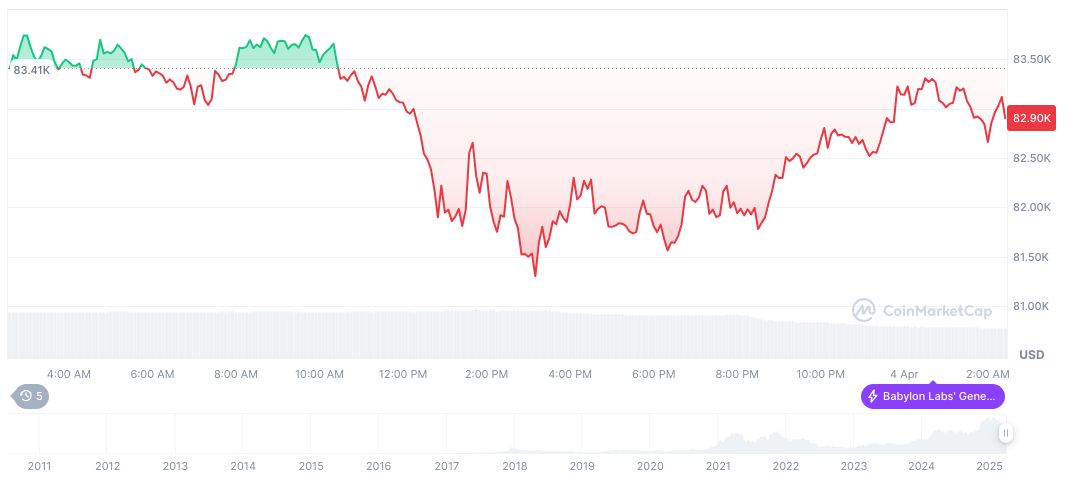- Bitcoin put options rise as market shows bearish sentiment.
- Increased bearish sentiment reflected by option strategies.
- Market pressure continues amid strategic changes and projections.
On April 4, 2025, significant Bitcoin put options were purchased, reflecting bearish market sentiment amid decreasing funding rates as reported by Coinglass.
This indicates prevailing fears in the crypto market, with funding rates below 0.005% and options anticipating further downturns.
Spike in Bitcoin Put Options Amidst Market Worries
A significant increase in Bitcoin put options was observed as funding rates declined below 0.005% on April 4, 2025, according to Coinglass. This activity, involving $100 million in options, points to a bearish market sentiment.
The Bitcoin market is experiencing constrained optimism due to various bearish drivers. A funding rate dip signals traders are using put strategies to potentially profit from a downtrend, anticipating possible price decreases.
Industry reactions highlight concerns, with Bitcoin advocates emphasizing its role as a store of value amid economic shifts. Michael Saylor’s advocacy for Bitcoin has pushed it into broader regulatory discussions, though concerns remain about reducing trust neutrality. Michael Saylor has been instrumental in framing Bitcoin’s regulatory future, while Vitalik Buterin maintains Ethereum’s decentralized vision.
Historical Comparisons and Price Analysis of Bitcoin Trends
Did you know? Bitcoin previously faced similar bearish pressure in 2018, when funding rates also suggested an oversold market, leading to a significant price correction and eventual stabilization.
Bitcoin, currently priced at $84,093.44 with a market cap of $1.67 trillion, exhibits a dominance of 61.92%. Recent trading volume reached $45.61 billion, reflecting a 1.67% increase in the past 24 hours despite a persistent bearish outlook. Analysis from CoinMarketCap indicates a continued decline over 30 to 90 days, signaling sustained pressure on the cryptocurrency.

According to Coincu research, the current market sentiment mirrors past corrective cycles often seen in volatile markets. While regulatory influences pose short-term challenges, technological advancements and adoption may provide long-term resilience.























